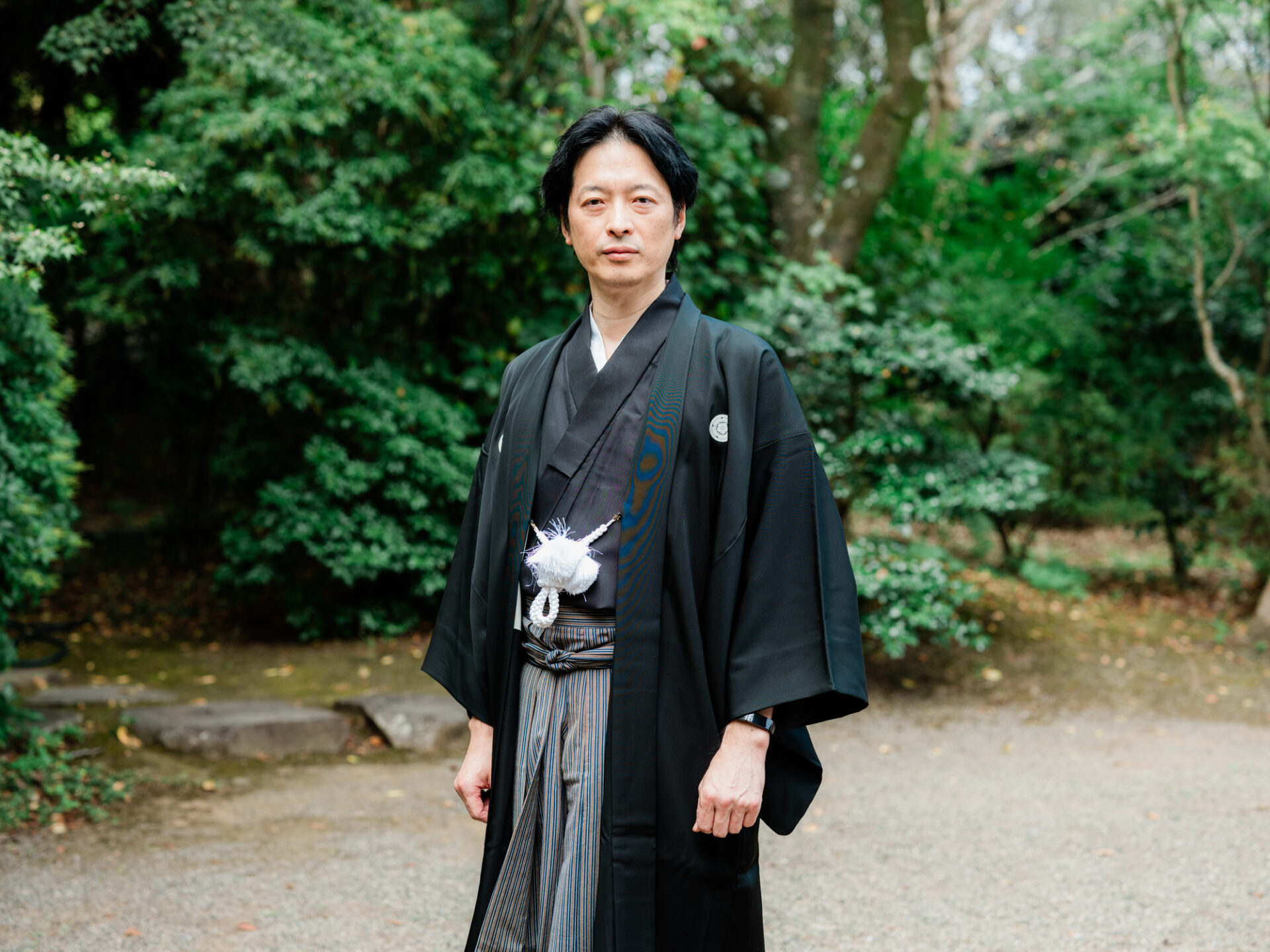
From Kumamoto to the World: A Philosophy of Life Expressed Through the “Art of the Samurai”

太田 光柾
Mitsumasa Ota
Kumamoto-city [Kumamoto]
Mitsumasa Ota
Born in 1973 in Kumamoto City. 8th-dan in Musō Jikiden Eishin-ryū under the All Japan Iaido Federation, graphic designer, and painter. Influenced by his father, he was exposed from childhood to iaidō and Kumamoto’s cultural traditions. His overseas experiences deepened his understanding of the art of the samurai, which he now introduces both in Japan and abroad through iaidō and art. Currently, he is also engaged in regional revitalization through traditional techniques.
When graphic designer Mitsumasa Ota visited France, he was confronted with his identity as a Japanese person—and with the presence of iaidō and swords that had always been close to him since childhood. What he realized was that beyond martial technique, there existed within the samurai spirit a profound philosophy of life. Following the legacy of Miyamoto Musashi’s thought, Ota has been working to spread the “Art of the Samurai” overseas. We spoke with him about his journey and the message it conveys.
Becoming Aware of His Japanese Identity Abroad
“From a young age, my family home had more than a dozen swords, and I grew up watching my father care for them. At the time, I thought that was normal for every household.”
Ota’s father, Seiji Ota, was a disciple of Master Nobuyuki Matsunaga, the 15th head of the Niten Ichi-ryū school founded by Miyamoto Musashi. Their home also had an iaidō dōjō, where renowned masters, swordsmiths, scabbard makers, and polishers often gathered, treating young Mitsumasa kindly. Still, in his youth, Ota’s interests were directed more toward Western music and art.
In his late twenties, he traveled to France as a graphic designer for a cosmetics company. Inspired by Western design since his teenage years, he was convinced that his works based on European aesthetics would be well received. Surprisingly, what gained attention was not those works, but rather his self-designed T-shirt featuring a Japanese family crest.
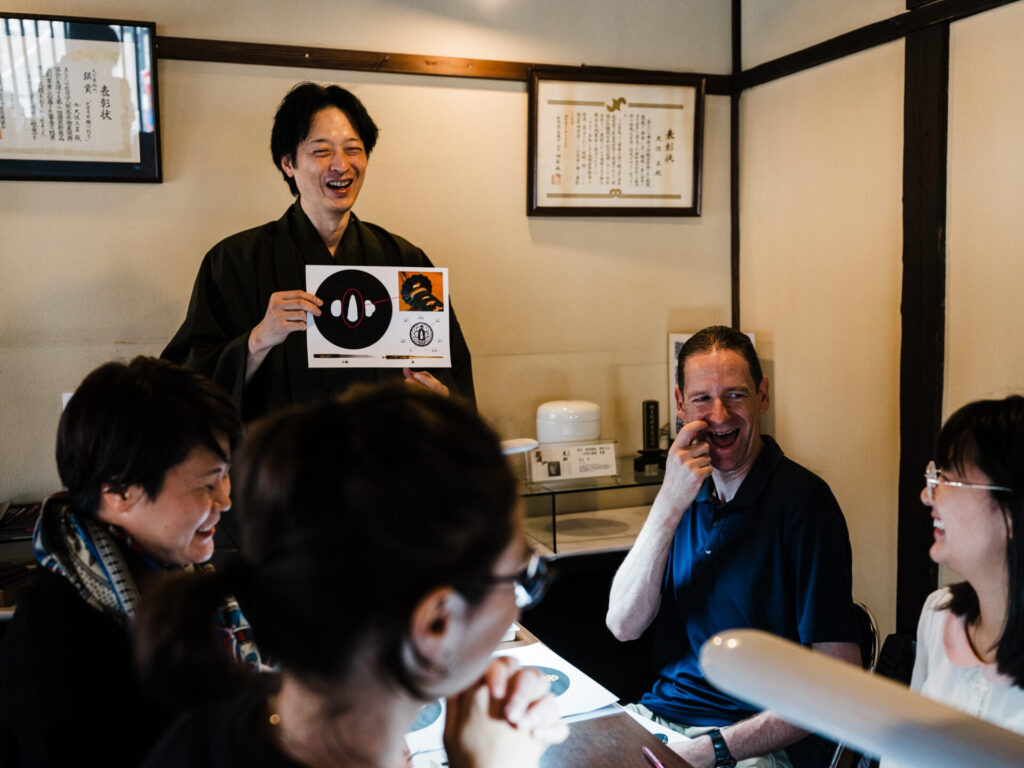
“That was the first time I truly became aware of being Japanese. It made me reflect on the environment in which I was raised.”
Japanese traditional culture appeared fresh to people abroad. From this experience, Ota became convinced that the aesthetics of “wa” (Japanese harmony and design), which he had not consciously considered before, held universal value.
Among the cultural artifacts stored in his home were Higo tsuba (sword guards) and sword fittings nurtured by the Hosokawa clan of Kumamoto. These works bore the deep influence of tea master Sen no Rikyū’s concept of wabi-sabi—an aesthetic that values imperfection, impermanence, and quiet beauty. Likewise, the kare-sansui dry gardens of Zen temples embodied a uniquely Japanese sensibility that seeks to reflect the essence of nature itself. For the first time, Ota began to see these traditions with fresh eyes.
Beyond Technique: The Spiritual Dimension of the Samurai’s Art
In France, realizing his Japanese identity made Ota aware that growing up surrounded by iaidō and swords was in fact “special.” Gradually, he became drawn back into the “Art of the Samurai” and returned to serious iaidō practice.
One of his strongest impressions was the constant emphasis on rei (bowing and respect). In iaidō, one bows to the gods, to the sword, to the teacher, and to fellow practitioners. “If it were simply about cutting down opponents, such rituals of respect wouldn’t be necessary. Why, then, is so much emphasis placed on it?” Ota began to investigate the history and meaning.
He discovered that the word tachi (long sword) derives from tatsu (“to sever”). Thus, iaidō emphasizes not the defeat of external enemies, but the severing of one’s own weakness.
Unlike weapons in other cultures, the Japanese sword was a means to face one’s own self. At the root of iaidō lies Shinto, Japan’s indigenous spirituality, which values harmony with nature and the divine.
“Iaidō does not exist to teach techniques of killing. The ‘way’ means spending a lifetime questioning how one should live. It’s the same principle found in calligraphy, flower arrangement, and the tea ceremony, which are all elevated to the realm of art. Realizing this was a revelation to me.”
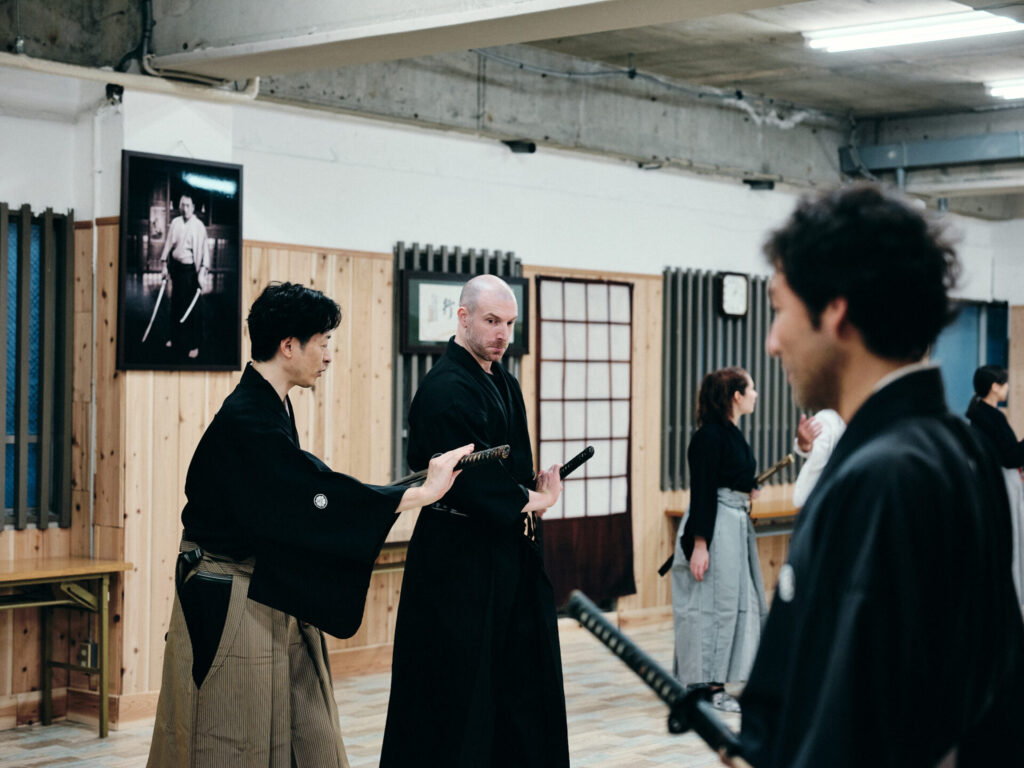
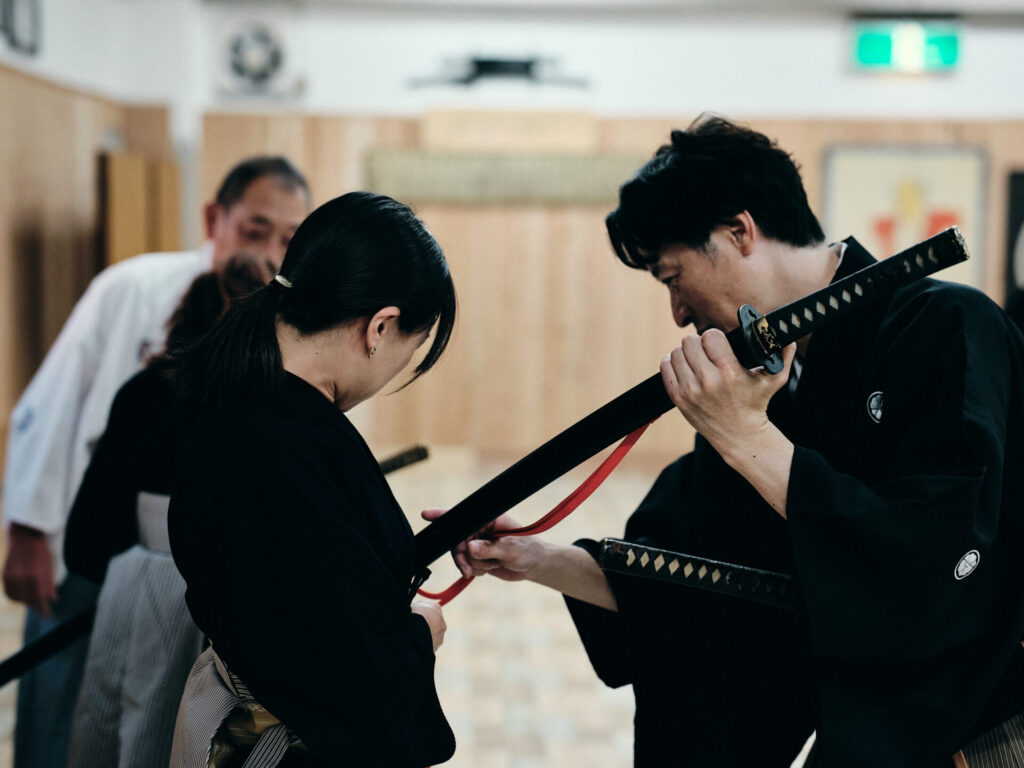
He also points out that about half of Japan’s designated national treasures are swords—evidence of how highly they were valued. One of the Imperial Regalia, the Kusanagi-no-Tsurugi, was originally a sword for cutting grass, not for killing.
“The sword is a sacred offering to the gods. Yet most Japanese today don’t know this. I feel it is my role to convey this meaning, both to Japanese people and to the world.”
In 2010, Ota held the exhibition The World of Higo Tsuba and the Art of Bushidō at the Shimada Museum of Art in Kumamoto, presenting paintings inspired by Higo tsuba that he had begun creating after his time in France. The response far exceeded expectations. That same year, he won first place at the All Japan Iaido Federation’s national tournament (6th-dan division), taking a major step as a bearer of the “Art of the Samurai.”
Learning from Miyamoto Musashi: The Swordsman as Artist
Another pillar of Ota’s activities is Miyamoto Musashi, who spent his later years in Kumamoto. While known as an undefeated swordsman with over 60 duels, Musashi was also an accomplished artist in painting, sculpture, and calligraphy. His treatise The Book of Five Rings consists of the scrolls “Earth, Water, Fire, Wind, and Void,” containing lessons not only on strategy but on life itself.
In the final “Scroll of Void,” Musashi wrote: “The Void is good, and has no evil.” He taught that liberation from desire, obsession, and the fixation on victory leads to the highest state of mushin (no-mind). Beyond winning lies inner peace—the essence of Musashi’s lifelong inquiry into “how to live.”
Ota seeks to share this spirituality with people through iaidō and art. He also sees in Musashi lessons for modern business:
“Musashi branded himself in three ways. First, by creating the two-sword style at a time when the one-sword style was dominant, opening a new path. Second, by gaining recognition from the Hosokawa clan not only as a swordsman but also as an artist. Third, by writing The Book of Five Rings to leave his philosophy to posterity. Across time and fields, we can all learn from Musashi.”
Sharing the Beauty that Leads to Inner Peace
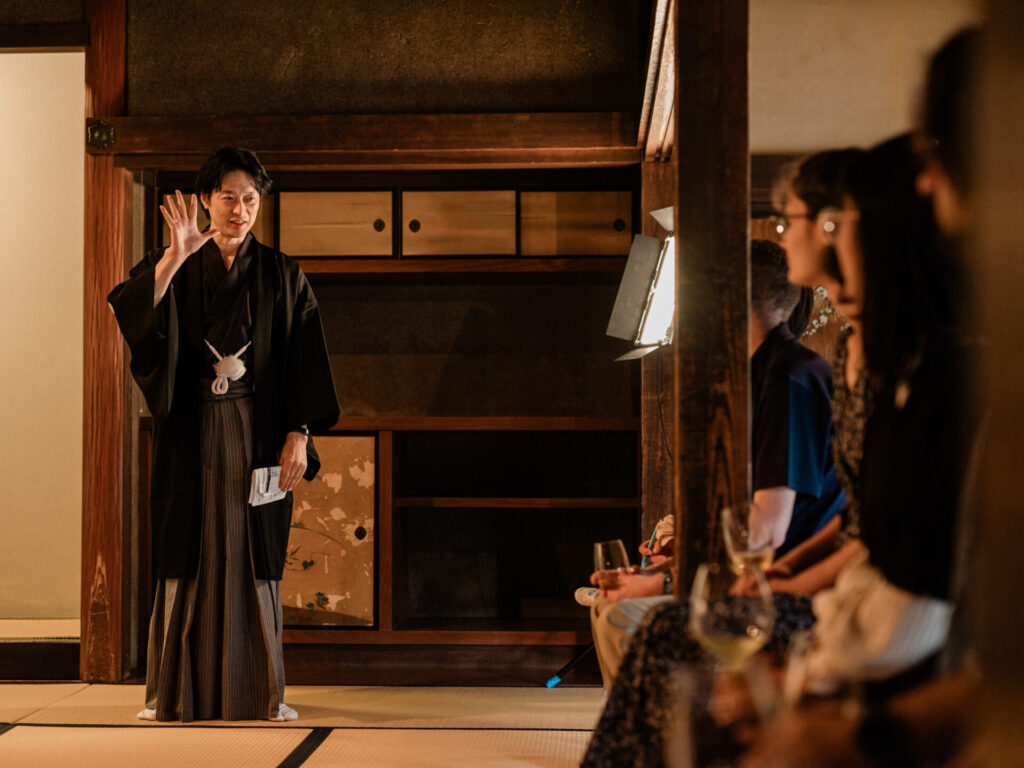
Since 2019, Ota has been offering iaidō experiences for international visitors to convey the “Art of the Samurai.” At the heart of these sessions, he emphasizes not spectacle, but beauty.
“Participants may expect a show of cutting objects with swords, but our tradition does not do that. What we want to share is the artistry and spirituality of the samurai—at the foundation of which lies beauty, leading to inner peace.”
Participants often comment that they felt a sense of tranquility, mindfulness, or an inner stillness beyond physical movement.
At a recent session in New York, a young woman told him, “What I’m seeking isn’t here in this city, but in Japan.” Surrounded by abundance and competition, she longed for the spiritual beauty rooted in Japan.
Ota also makes sure to share a historical episode: During the Battle of Sekigahara in 1600, Hosokawa Yūsai held out in a castle with only 500 troops against Ishida Mitsunari’s 15,000. The Emperor intervened—not for political reasons, but because Yūsai was the sole living heir to the secret traditions of classical waka poetry. If he died, the poetic lineage would be lost. Thus, the battle was avoided, and Yūsai’s life was spared.
“This miracle, in the midst of a decisive war, symbolizes the Japanese spirit of valuing culture and tradition. It shows us that the will to preserve heritage can even stop conflict. This is not only Kumamoto’s treasure, but Japan’s treasure—and something the world needs to hear today.”
Ota has also been active in regional revitalization. In 2017, he organized The Kikuchi Clan and Enju Swordsmiths Exhibition in Kikuchi City, highlighting the area’s 700-year swordsmithing tradition. Boosted by the popularity of anime and games, the event drew over 5,000 visitors, inspiring younger generations and local residents to rediscover their heritage. Today, it has become a major attraction for the city.
He envisions linking samurai heritage sites across Kyushu into a cultural tourism route, connecting traditions for both Japanese and international visitors while addressing the challenges of succession and local economies.
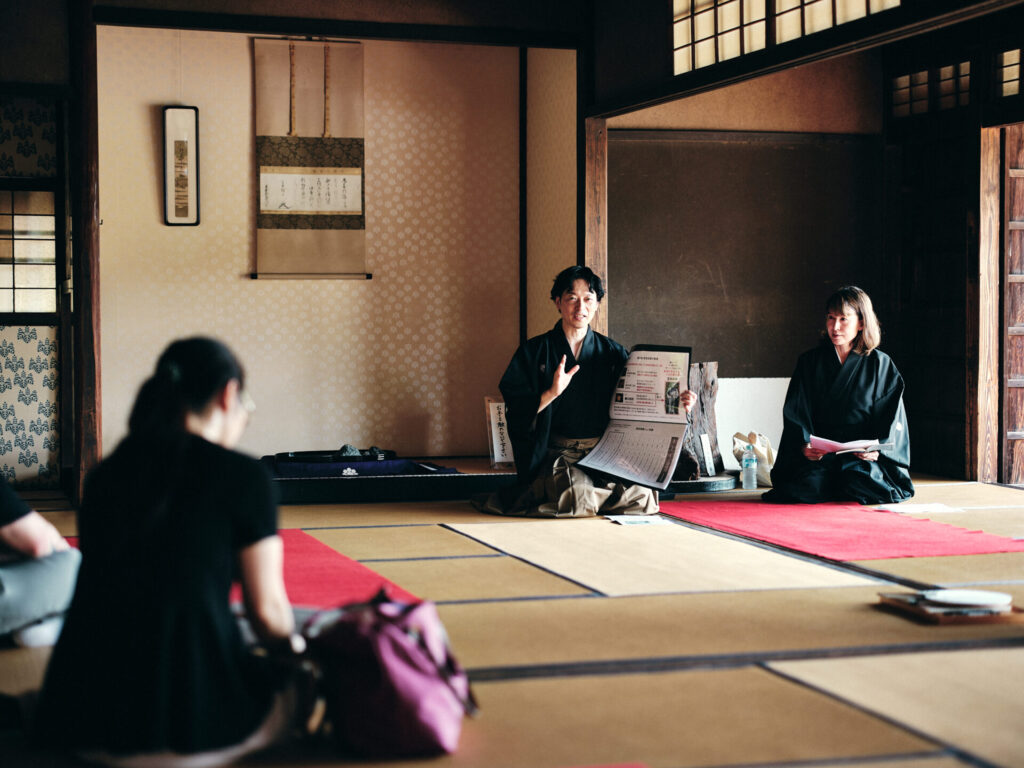
What Should Be Passed to the Future?
When asked what he most wishes to pass on to the future, Ota shared this story:
“During the 2016 Kumamoto earthquake, I went with my father to a convenience store to buy water and food. I thought, ‘If we don’t buy now, there may be none left tomorrow,’ and I began to hoard supplies. My father stopped me and said, ‘Leave some for others.’
That one phrase brought me back to myself. I realized that was the true spirit of iaidō, and I felt ashamed. Even during the 2011 Great East Japan Earthquake, Japanese people did not loot or riot, but maintained order. That discipline itself is the spirit of iaidō. My father’s words became my compass in life. And I believe this spirit can resonate with people everywhere.”
At its core, the “Art of the Samurai” is about constantly reflecting on how to live. One may never find a final answer, even in a lifetime. Yet the act of seeking itself brings peace to the heart and can guide society toward harmony.
Through his work, Mitsumasa Ota offers us—and future generations—a chance to contemplate our own path.
